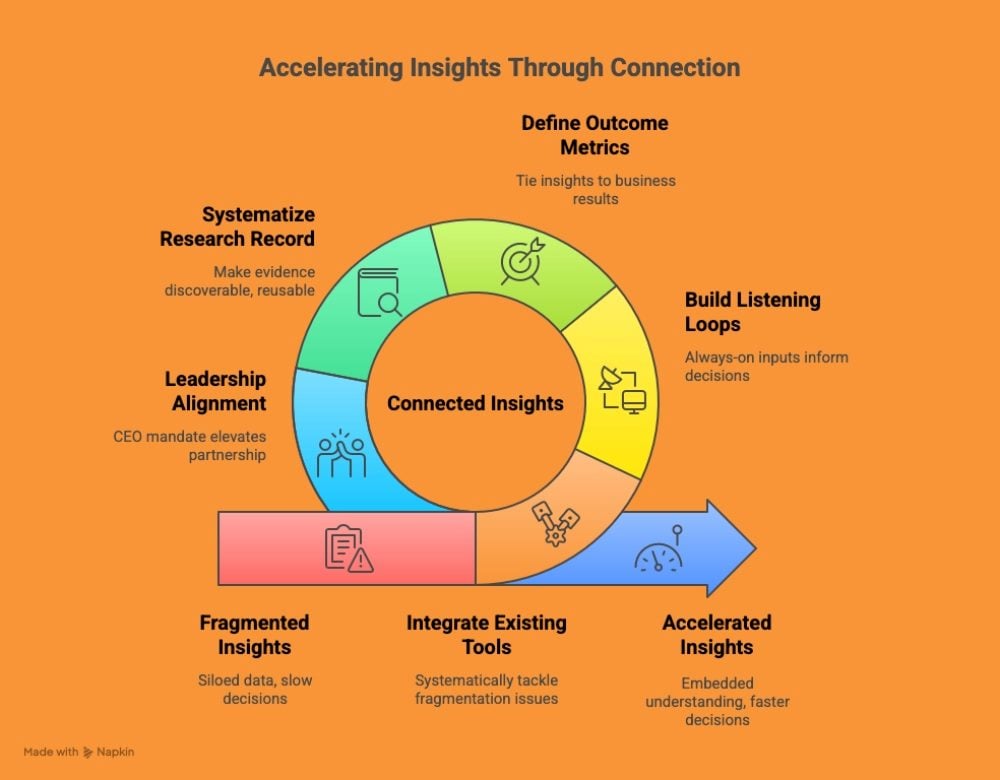The Gist
- Tech adoption is high, but impact lags. Seven in 10 teams now use insights technology, yet only 38% connect data effectively.
- Integration, not budget, is the bottleneck. Fragmentation and ad hoc processes prevent insights from shaping business decisions.
- Connected insights drive measurable value. Organizations that systematize evidence and align leadership achieve faster cycle times, stronger ROI and higher internal satisfaction.
Marketing and CX leaders are actively investing in AI and data roles, and recent research from Zappi shows that seven in 10 teams now use technology routinely in their consumer insights workflows.
Yet the study also shows that the impact is uneven because too few organizations have solved the integration problem, with only 38% reporting that insights and data are actually connected. Data fragmentation is the top barrier, not budget, and fewer than four in 10 companies say their insights and data are actually connected. This is a critical factor shaping the industry today.
Barriers to Connected Insights
Why integration, not budget, is the leading roadblock for marketing and CX teams.
| Barrier | Reported Level | Impact on Insights |
|---|---|---|
| Data fragmentation | Top barrier (only 38% report data/insights are connected) | Evidence remains siloed and disconnected from decision points |
| Integration complexity | Frequently cited | Insights are not reusable across tools or teams |
| Budget constraints | Less significant than in past years | Funding exists, but operating model limits impact |
| Ad hoc processes | Common in majority of organizations | Lack of systematization hinders measurement and reuse |
The practical implication is simple. AI only accelerates value when organizations connect consumer understanding to the points where decisions are made. Otherwise, teams get faster activity without better outcomes, because evidence arrives late or inconsistently. Leaders who prioritize connection first are experiencing higher internal satisfaction and more credible links to business results.
Table of Contents
Investment Is Rising, With Uneven Results
Hiring for AI and data integration roles continues to grow while digital consumer insights are now the norm. The barrier profile has shifted as a result. Budget issues have receded while integration complexity has moved to the top of the list. That shift reflects where the industry actually is: there is funding, there are tools, but there is not a standard operating model for how data moves through the enterprise.
According to the research, only a third of organizations are systematically managing insights. This means that most still rely on separate tools and programs or ad hoc combinations of vendors and platforms, which makes reuse and measurement difficult. Until leaders standardize how evidence is produced and consumed, incremental AI investment will continue to deliver only incremental value.
What Connection Changes
The research distinguishes between “connection” and “connected organization,” as well as those who have yet to make these critical investments to get better insights and understand their customers better. As a matter of contrast, connected organizations report materially higher satisfaction with their insights function and with the relationship between marketing and insights. This shows up in cycle time, in the volume of rework and in the tenor of planning discussions. It also shows up in measurement. Connected teams are more likely to tie insights work to launch success, operational efficiency and marketing effectiveness, while disconnected teams are the most likely not to assess value at all.
Impact of Connected vs. Disconnected Insights
What marketing and CX leaders gain when insights are fully connected.
| Dimension | Connected Organizations | Disconnected Organizations |
|---|---|---|
| Cycle time for insights | Shortened, early in process (“shift left”) | Longer, often after projects launch |
| Use of consumer input | Consistently shapes planning and scope | Often skipped or added only after problems |
| Measurement practices | Tied to launch success and marketing ROI | Minimal or no measurement of outcomes |
| Internal satisfaction | High—evidence visible and credible | Low—teams frustrated by rework |
Connection also moves evidence earlier in the process, often called “shift left” in engineering circles. Companies with connected insights bring consumer understanding into work before projects begin, while disconnected teams are more likely to skip consumer input altogether. This is a structural advantage because it shapes scope and reduces the need for downstream corrections.
Related Article: The Most Overlooked Source of Actionable Customer Insights
Technology and Maturity Are Linked
Most teams already use technology frequently in insights work, but the strongest correlation appears inside connected organizations. Eighty-two percent of “connected companies” report frequent tech use for insights compared with 69% of fragmented and 68% of disconnected peers. The pattern reinforces a basic point. Technology enables connected insights at scale, but the payoff depends on the operating model that surrounds it.
Belief and behavior track together. Those with connected insights are more likely to say AI is very important for insights work, and insights professionals are the most supportive stakeholder group across functions. On the ground, teams are using AI to summarize open-ended responses, automate survey analysis and simulate customer personas to test ideas. These are practical accelerators that reduce manual time and support faster synthesis.
The Accelerated Organization Is the New Standard
The next stage of maturity brings with it a speed that builds on the foundation of connection. Therefore, leading companies are moving from “connected” to “accelerated.” In these organizations, consumer understanding is embedded in daily operations and access is sped up with AI. This creates a tighter bridge between marketing and insights and makes decision-making faster and more consistent.
Acceleration is not simply a tool purchase. It is an architectural choice. Processes run continuously, data remains connected across teams, and automation handles routine analysis so that experts can focus on interpretation and action. This is how companies remove latency from decisions without diluting judgment.
Leadership Alignment Is Decisive
The industry data and firsthand experience show that mid-level sponsorship is not enough. Reaching the accelerated state requires a clear mandate from the CEO, a marketing organization that elevates the partnership with insights and an insights function that behaves like a business architecture team. Without this alignment, AI spending turns into a set of isolated projects that do not change outcomes.
There is also a proven playbook for earning executive support. This involves framing the change as business transformation, quantifying the cost of the status quo, showing where competitors are moving, and proposing a phased implementation that demonstrates value early. These are the actions that unlock resources and attention.
Practical Actions for Marketing Leaders
The following moves reflect where high-performing teams in connected organization are focusing now:
- Audit and integrate what you have before buying more tools. Technology correlates with satisfaction only when properly integrated, so tackle fragmentation systematically ahead of incremental purchases.
- Build continuous listening and response loops. Replace project-by-project requests with always-on inputs that inform planning and go-to-market decisions.
- Define and track outcome metrics. Tie insights to product launch success, operational efficiency and marketing effectiveness, and close reviews with evidence, not anecdotes.
- Stand up a system of record for research. Systematization improves satisfaction and reduces duplication by making evidence discoverable and reusable across teams.
Use these actions to create a plan that will surface integration gaps, establish shared accountability with insights and make visible evidence of impact that accelerates executive sponsorship.
What to Measure for Connectedness
Measuring progress is critical to ensure long-term success and staying on track with your goals to grow first connected, then accelerated. Measure the following:
- The level of connectedness across your insights landscape, since only 38% of companies report a connected state.
- The engagement model between marketing and insights, where satisfaction rises with connection and with programmatic management.
- The degree to which AI is accelerating consumer understanding without compromising quality.
These indicators are practical to instrument. You can measure connection with a simple inventory of data flows and reuse. You can measure the partnership by surveying stakeholders on satisfaction with the operating model. You can measure AI acceleration by tracking turnaround times for common analysis tasks and the share of briefs that include pre-brief consumer evidence.

Summary: Turning AI Investment Into Measurable Outcomes
The state of the industry is clearer this year than last. Investment is up, technology use is common and executive expectations are high. The constraint is integration. Data fragmentation leads the list of barriers, and too few organizations have connected insights to the decisions that matter. Leaders who correct this first are reporting higher satisfaction internally and more consistent links to outcomes.
The path forward is deliberate, but not without its challenges. Earn connection, then accelerate. Invest in the operating model and integration layer that make consumer understanding continuous and available at decision points. Use AI to speed synthesis once the data and workflow are in order. Treat this as an enterprise capability rather than a series of tools. That is how AI spending turns into measurable advantage.
Learn how you can join our contributor community.






